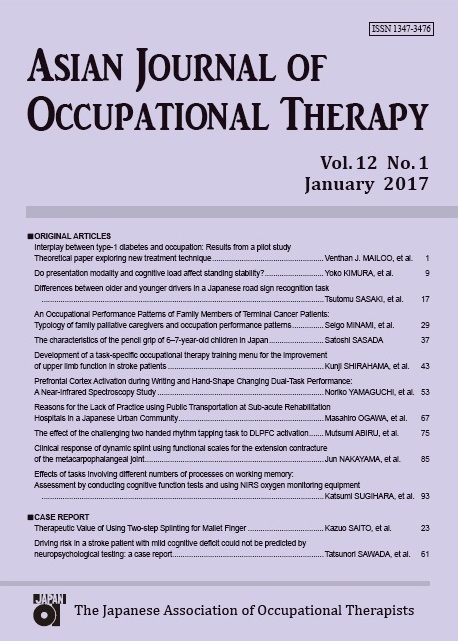Current issue
Displaying 1-9 of 9 articles from this issue
- |<
- <
- 1
- >
- >|
ORIGINAL ARTICLE
-
2024 Volume 20 Issue 1 Pages 1-11
Published: 2024
Released on J-STAGE: January 30, 2024
Download PDF (377K) -
2024 Volume 20 Issue 1 Pages 12-20
Published: 2024
Released on J-STAGE: February 28, 2024
Download PDF (284K) -
2024 Volume 20 Issue 1 Pages 21-28
Published: 2024
Released on J-STAGE: February 28, 2024
Download PDF (282K)
REVIEWS
-
2024 Volume 20 Issue 1 Pages 29-48
Published: 2024
Released on J-STAGE: May 07, 2024
Download PDF (418K)
ORIGINAL ARTICLE
-
2024 Volume 20 Issue 1 Pages 49-58
Published: 2024
Released on J-STAGE: July 09, 2024
Download PDF (716K)
REVIEWS
-
2024 Volume 20 Issue 1 Pages 59-69
Published: 2024
Released on J-STAGE: August 28, 2024
Download PDF (2574K)
ORIGINAL ARTICLE
-
2024 Volume 20 Issue 1 Pages 70-76
Published: 2024
Released on J-STAGE: August 28, 2024
Download PDF (414K) -
2024 Volume 20 Issue 1 Pages 77-85
Published: 2024
Released on J-STAGE: September 13, 2024
Download PDF (1675K) -
2024 Volume 20 Issue 1 Pages 86-92
Published: 2024
Released on J-STAGE: September 13, 2024
Download PDF (272K)
- |<
- <
- 1
- >
- >|
